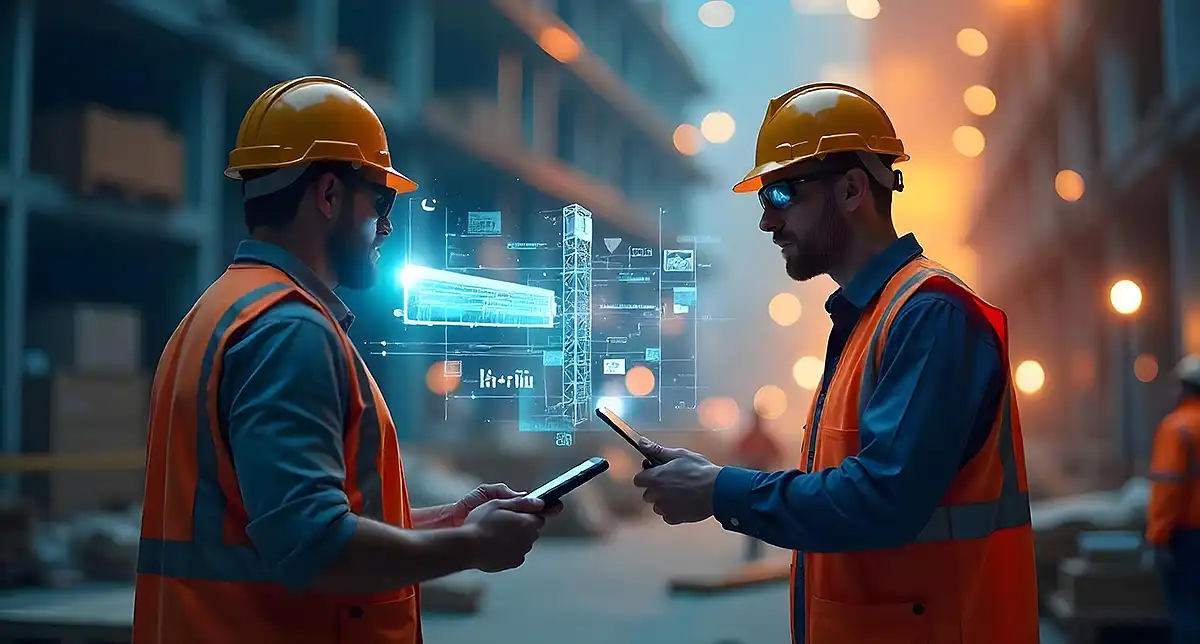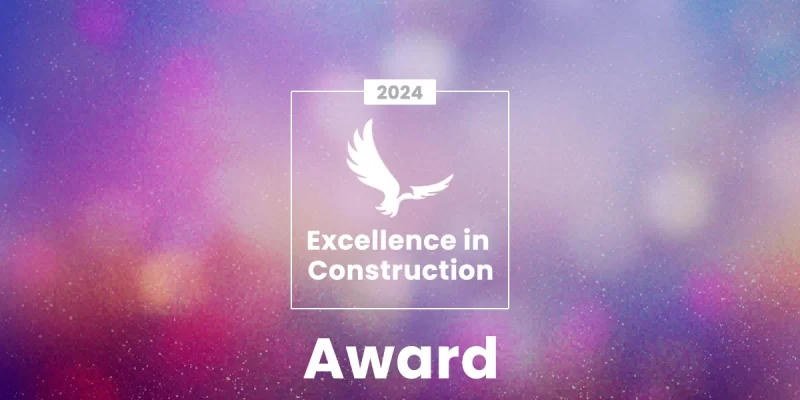In the construction industry, a Request for Information (RFI) has long been a necessary evil – a time-consuming process also cause significant delays and additional costs. But with the help of Artificial Intelligence (AI) and predictive analytics—using data to forecast potential issues—there’s now a way to minimize or even eliminate the need for RFIs.
Why Are RFIs a Problem?
RFIs can create several headaches for construction projects:
Delays: Every time an RFI is submitted, work has to pause until the issue is resolved, which can slow down the entire project.
Extra paperwork: RFIs require lots of communication and documentation, adding to the workload for everyone involved.
Costly mistakes: If an RFI isn’t answered clearly or addressed properly, it can lead to errors that are expensive to fix.
Disputes: Misunderstandings or delays from RFIs can spark conflicts between contractors, architects, and other team members.
Thankfully, with AI and predictive analytics, construction teams can speed up the process, reduce RFIs, and avoid these common problems, leading to smoother, more efficient projects.
Pattern Recognition:
Pattern recognition is one of AI’s biggest strengths, especially in the context of construction projects. It can analyze past project data, like Requests for Information (RFIs), to uncover patterns and trends that help predict potential problems. RFIs are formal requests made when something in the project isn’t clear, such as when details are missing or when something needs further clarification. By reviewing RFIs from previous projects, AI can pinpoint common causes—like unclear design plans, specification errors, or breakdowns in communication between teams.
For instance, AI might notice that certain design mistakes often lead to multiple RFIs, or that certain issues tend to arise during specific stages of a project. By identifying these patterns, AI can help forecast where similar problems might occur in future projects, allowing teams to proactively address them before they cause delays or disrupt progress.
The main advantage here is that by catching these potential issues early, teams can prevent setbacks and avoid costly mistakes. This not only keeps the project on schedule but also saves time and money by fixing problems before they escalate.
Real-time Data Processing:
Real-time data processing is a key feature of AI that constantly keeps an eye on project documents as they get updated. In construction, things like design drawings, schedules, and contracts are frequently revised, and AI tracks these changes as they happen.
Whenever AI spots mistakes or inconsistencies—like mismatched measurements in blueprints, incorrect material specs, or unclear instructions—it flags them immediately. This helps catch issues early, so teams can address them before they snowball into bigger problems, like Requests for Information (RFIs).
Construction projects involve many different teams, such as electricians, plumbers, and carpenters, all working in parallel. Sometimes their work overlaps or conflicts—for example, plumbing might clash with structural elements in the building. AI can spot these potential clashes early and alert the team, giving them a chance to fix the issue before it escalates.
The big advantage of real-time data processing is that it enables teams to act quickly. Rather than waiting for a problem to grow or cause delays, AI helps identify and resolve issues as they arise, keeping the project on track and avoiding costly mistakes.
Analyze Project Documentation
AI can quickly review and process large volumes of project documents—like blueprints, contracts, and specifications—in real time. This is particularly useful for managing Requests for Information (RFIs), which often arise from mistakes or missing details in these documents. Instead of manually sifting through everything, AI can scan and analyze all kinds of documents—such as architectural plans, engineering drawings, and contracts—whenever they’re updated. This not only speeds up the process but also helps reduce human errors.
AI can also cross-check information between different documents to ensure everything aligns. For instance, if something in the architectural drawing doesn’t match the structural design or mechanical plans, AI will catch it right away and flag the issue. It can also make sure that when a change is made in one document, it gets automatically updated across all related documents, keeping everything consistent.
By automating the process of reviewing documents, AI lifts the burden from the human team, so they don’t have to check every detail manually. This means fewer mistakes and faster progress. AI helps catch potential problems early, allowing the team to fix them before they cause major delays or costly errors. Ultimately, this makes the whole project run more smoothly and helps keep it on track.
Predict Potential Issues
AI doesn’t just react to problems as they happen—it can actually predict potential issues before they arise. By analyzing data from past projects, including Requests for Information (RFIs), AI can identify patterns and highlight which problems are most likely to crop up in the current project.
But AI goes beyond just identifying problems—it also suggests ways to prevent them. If certain types of designs or drawings have led to confusion or errors in the past, AI might recommend additional reviews or checks for those areas to ensure everything is clearer and less likely to cause issues down the line.
AI can even assess the overall risk of different parts of the project. It looks at which areas are more prone to RFIs and flags these high-risk zones for the team. For example, if there’s a particularly complex design or tricky site condition that’s caused problems in similar projects, AI will call attention to it, so the team can allocate extra resources and focus to prevent issues from arising.
Provide Smart Solutions
AI can make problem-solving on construction projects much faster and easier by drawing on lessons learned from past projects. It has access to a wealth of data about what solutions worked well before and can suggest these proven solutions when similar issues arise in the current project.
AI can also handle repetitive issues by automatically generating responses to common questions or problems. For instance, many RFIs are about clarifying design details or material specifications. Instead of answering these manually each time, AI can quickly create standardized responses based on past solutions or templates, saving time and cutting down on errors.
As AI continues to process RFIs and project data, it builds up a growing knowledge base—filled with successful solutions, best practices, and lessons learned—that teams can tap into in the future. This growing resource helps teams solve problems more efficiently and avoid repeating the same mistakes on future projects.
The real benefit here is that AI doesn’t just help solve current problems faster; it also reduces the chances of similar issues popping up down the road.
How can Construction Companies Start using AI for RFI Management?
Start Small
Instead of rolling out AI across all projects or teams at once, the best approach is to start small and test it in a controlled way. This allows construction companies to fine-tune the system, address any issues, and make sure it works smoothly before expanding its use. The first step is to run pilot projects—smaller projects or specific parts of a larger project—where the AI system can be tested in real-world conditions. These pilot projects act as practice runs, giving teams a chance to see how the AI performs, spot any problems, and assess how well it fits with existing workflows.
To make the most of these tests, it’s smart to focus on areas where issues tend to happen most often. For example, if previous projects showed that design mistakes or communication breakdowns between contractors led to a lot of RFIs, those would be the ideal places to test the AI. By focusing on the areas with the most common challenges, you can see how well AI addresses those specific issues.
Once the AI system has been tested and refined on a smaller scale and shown to work well, the next step is to gradually expand its use to other parts of the project or new projects. This gradual rollout helps the team get comfortable with the technology and makes it easier to handle any challenges that arise.
Train Your Team
For AI to work well on a construction project, it’s crucial that everyone on the team knows how to use it and understands how it can make their work easier. This means proper training and getting the team on board with the new technology. Training ensures the AI system is used correctly and integrates smoothly into the daily workflow. It should cover how to input data into the system, interpret the insights it provides, and take action based on those insights. Training can include workshops, online tutorials, or even one-on-one coaching to help everyone feel confident using the new tools.
Equally important is helping the team understand how AI will make their jobs easier. Whether they’re project managers, engineers, contractors, or architects, people are more likely to embrace the technology if they see how it benefits them. If they realize that AI can save them time by automating repetitive tasks, speeding up decision-making, and preventing costly RFIs, they’ll be more motivated to use it. Showing the team the practical benefits—like how AI can save time or reduce delays—can help get them excited about using the system.
Maintain Quality Data
For AI to work effectively, it needs high-quality data. This means the information it uses must be accurate, consistent, and up-to-date. AI relies on this data to make predictions and provide insights, so if the data is incorrect or outdated, the AI could make mistakes, offer poor advice, or miss important issues—making it much less useful for the project.
To ensure AI can analyze things like design drawings, architectural specifications, and contracts correctly, the data entered into the system must be right from the start. If there are errors when entering data—whether during planning or at any point later—the AI could make wrong predictions or overlook potential problems. As the project moves forward, it’s also important to keep the system updated with the latest information. New drawings, changes to specifications, and any new RFIs (Requests for Information) should be added regularly, so the AI stays aligned with the current status of the project. This helps the AI continue learning and improving, which means it can make more accurate predictions and better recommendations over time.
It’s also helpful to track whether the issues the AI predicted were actually avoided, or if new RFIs popped up that the system didn’t flag. This feedback loop allows the AI to get smarter by learning from both the problems it caught and the ones it missed. The more it learns from these real-world outcomes, the better it gets at predicting and preventing issues in the future.
Wrapping Up

Using AI and predictive analytics in the construction industry can revolutionize how projects are managed, especially when it comes to reducing the number of “Requests for Information” (RFIs). RFIs are formal requests made when there’s confusion or a need for clarification on a project. These requests often lead to delays, increased costs, and miscommunication. AI can help by analyzing past project data to identify patterns of common issues, solving them before they cause disruptions. It can also monitor real-time data to catch mistakes as they happen, preventing bigger problems down the line.
AI can even review project documents like blueprints and contracts automatically, cutting down on human errors and improving communication among everyone involved. By predicting potential issues based on past experiences and offering solutions, AI doesn’t just find problems—it acts as a proactive partner, making sure projects run more smoothly.
For AI to be effective in managing RFIs, construction companies need to take small steps at first, train their teams, and ensure that the data being used is accurate. As AI learns from each project, it becomes better at predicting and preventing future problems. Over time, AI can help construction projects finish faster, cheaper, and more efficiently by spotting potential issues before they become major obstacles. In the end, AI has the power to transform how construction projects are carried out, helping them stay on track, within budget, and with fewer complications. Contact Russell and Dawson today to streamline your construction projects, cut down on RFIs, and leverage AI technology for better efficiency and results. Our team of experts is here to help you every step of the way!














